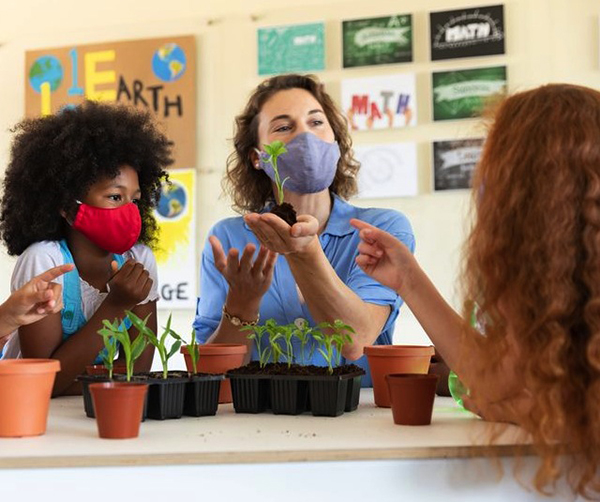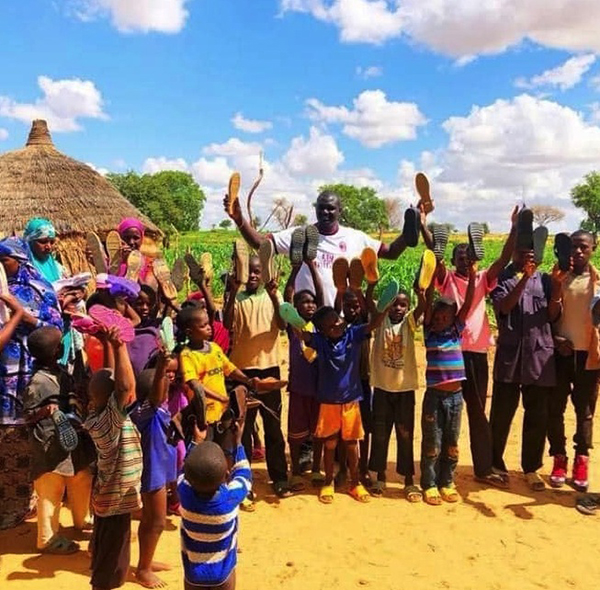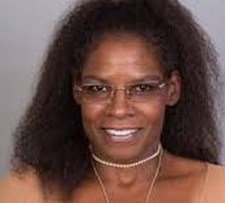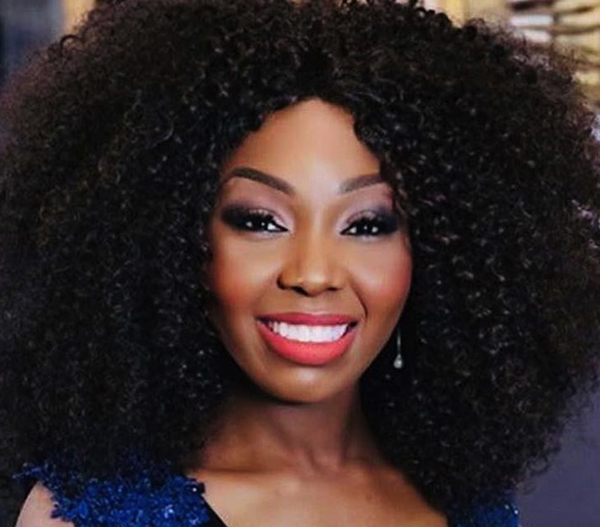MAKING A DIFFERENCE
By Darlene Donloe
Contributing Writer
In an effort to empower and inspire students of all ages and backgrounds to become the environmental leaders of the future, Grades of Green is on a mission to teach children to care about the environment.
Through a pathway of free programs, the nonprofit has inspired more than 670,000 students in 47 states and 27 countries to care for the environment.
Whether it has to do with carbon footprints, recycling, climate change (frequent drought, melting glaciers, heavier rainstorms), global warming or the evaporation of clean water, and more, Grades of Green offers guidance on how to address these real problems by applying personal and cultural shifts.
In an effort to affect long-term positive change, the organization encourages the establishment of good habits that have an impact.
Kim Siehl, 61, has been the executive director of Grades of Green for three years.
“I understood the importance of our students becoming the leaders who will guide the planet for decades,” said Siehl, who grew up in Manhattan Beach.
James Saracini, 33, Grades of Green’s marketing and communications director, said he has “always been passionate about environmentalism” ever since he was a kid.
“I spent a lot of time outdoors and always cared about the environment,” said Saracini, who studied journalism at the University of Missouri. “Grades of Green has an important impact. It matches what I care about.”
Grades of Green, which received the Environmental Protection Agency’s Environmental Award for inspiring kids and the broader school community to go green, provides students with the support and resources they need to discover their passion and turn it into environmental action. The organization offers personalized mentorship and hands-on environmental leadership training through project-based learning, including required civic engagement projects that actively work on environmental issues to create impact.
“This is not an after-school program,” said Siehl, a mother of two. “We work with students in any grade. We provide mentorship. The program is online. We did that pre-COVID.
“This is a year-long program where they learn about environmental issues. They find what they are passionate about. They build a project with an adult and decide what they want to do,” she added.
“Maybe they want to plant trees or collect waste or advocate for something. Whatever they are passionate about. It’s about learning through doing. Our goal is to reach and educate the entire student body.”
“The program is open to all students,” Saracini said. “Last school year we had 593 students on 95 separate teams in seven states and six countries. There were 70 to 80 schools last year. We have some elementary, junior high and high schools mostly.”
While talking to students about the environment, Saracini said he found many students were afraid of what the future held.
“When I talk to kids about it, I find they are afraid,” he said. “I can’t tell you how many times I’ve talked to them and they tell me things that affected me. They are concerned about their future and the future of their kids.
“It changes you when you talk to an 11-year-old boy and he says, ‘My kids aren’t going to be able to live a long time. They are not going to be able to enjoy the same world that I am. We have to do something about that. My parents’ generation and the generation before that haven’t given me a world where my kids are going to be as happy and healthy as I am.’
“When I hear things like that, it makes me incredibly passionate.”
When it comes to society’s bad habits, Saracini said there are a couple of different answers to fixing the issues.
“We talk to our students a lot about holding corporations and government accountable,” he said. “A lot of time there has been a big push, sometimes from those very corporations, to push environmentalism onto consumers and individuals, when in reality it’s these large corporations and large polluters that are sharing the brunt of fossil fuel, emissions and all these things that move the needle in a negative way on climate change.”
Saracini said he talks to students about how to advocate for the environment.
“Students want to teach their families to eat less meat, drive less, use less fossil fuels, and use less single-use plastic,” he said. “All that’s great and part of the puzzle, but a lot of what our students are passionate about is pushing for government and corporations to change their habits. Those kinds of passions really do change and address climate change in a big way. We tell our kids to be advocates and to support movements on the national level.”
“Simultaneously, we try to give them a broad base of knowledge on how many things affect the environment,” Siehl said. “The students are like, ‘really if I plant trees, it will help?’ We try to make those connections. It’s not about one thing. It’s about changing their habits. You can make small changes and it will affect the environment.”
When it comes to long-term positive change, Saracini said it includes large plastic producers listening to their consumers, which could change their bottom line.
“If we inspire them, it could be the thing that changes them,” Saracini said. “Things like the government committing to 100% clean energy, offsetting greenhouse gas emissions for a company — all that is change.”
Some of Grades to Green’s programs include Climate Solutions, where student teams create their own project to solve a climate-related environmental issue in their communities. Launch Project Tool Kit, which is launching this fall, is about providing ready-made projects in a box for students.
Soar is a leadership academy and Creating District Partnerships engages students in environmentally disadvantaged school districts. In 2014, Grades to Green’s Youth Corps Eco-Leadership Program was honored by Keep America Beautiful with a national youth recognition award.
Within the next two years, Grades of Green will launch three new programs that are free for students, schools and parents. The programs will meet the following objectives: provide accessible, engaging, educational and impactful environmental project-based programs for students in every grade level; develop and implement programs to be scalable, sustainable, equitable and measurable; build and empower environmental change-makers and leaders to initiate and inspire local communities to make long-lasting impacts; and bring students around the globe together to work toward transformative solutions.
Grades of Green was started in 2009 by four Southern California moms — Lisa Coppedge, Shaya Kirkpatrick, Suzanne Kretschmer and Kim Lewand Martin — who saw that their children and their peers were frustrated by the lack of resources to act on the pollution and waste issues that were increasingly affecting their community. They wanted to equip today’s youth with the skills and tools to deal with this environmental inheritance.
Grades of Green was incorporated as a nonprofit in 2010.
“It was organic,” Siehl said. “It started at one school, then spread within the district. It was saving money in the district.
“We had some students in New York,” Siehl added. “Someone with Grades of Green lived in New York, then it spread through social media. Now it’s in Africa, Italy and other areas.
“It’s a ripple effect. We find districts that need us the most. This generation is much more aware of the environment. The future looks bright with this generation. They believe they can make the difference.”
“Making a Difference” is a weekly feature profiling organizations that are serving their communities. To propose a “Making a Difference” profile, send an email to newsroom@wavepublication.com.
Darlene Donloe is a freelance reporter for Wave Newspapers who covers South Los Angeles. She can be reached at ddonloe@gmail.com.













